Related pages
- Index - Home
- Track Plan, Map
- Latest News
- Locomotives
- Rollingstock
- Bridges
- Buildings
- Line Side
- Description
- History
- Links
- Basement




|

The Story of the Barron Tableland Railway
The town of Tabletop was founded in the early 1860's and centred on a natural pass in the Range,
known as the Barron Tablelands, not because they a barren, but because the headwaters of
the Barron River eminate from that Tableland region.
The Barron River parallels Goanna Creek that the BTR follows and which has its source upstream from the town of Tabletop.
Local features at Tabletop include, the underground limestone caves, hot pools and plentiful fresh water streams that traverse the lush and
fertile grasslands and forests that cover this plateau. Farm produce, forest products, a developing cattle industry all made the region prosperous.
Over the years packhorse tracks had established numerous routes up the Great Dividing Range from the coast to the Tableland.
The discovery of mineral wealth on the Tableland in 1868 saw a massive influx of people and equipment and ever-increasing needs for
travel and movement both up and down the mountains for people and goods. Then the subsequent need to get the ore down to a coastal wharf
raised the prospect of building a unique railway connecting to an enhanced wharf loading facility on the coast near the mouth of Goanna Creek.
The town at Shenanigan's Wharf was established in the 1870's, as a transhipment port for goods to and from
the hinterland settlements that sprang up on the Tableland some 50 kilometres inland and about 800m above sea level.
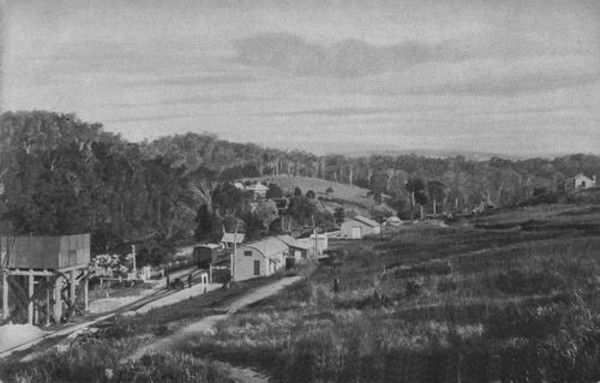 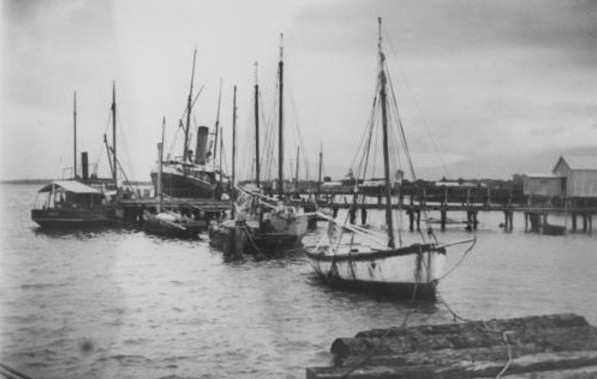
The town and station at Tabletop - - - - - - - - - - - - - - - - - - - - The wharf at Shenanigan's
The route selected was the optimum in alignment, gradient and distance travelled, and yet it presented the surveyors and builders with
an enormous task. One design feature that seems unusual these days it that the surveyors and the quantity surveyors determined that they would
avoid any tunnels and prefer to balance the volumes of cut and fill to keep construction costs down.
In what was surely one of the great engineering feats of the 19th century, a team of some 600 men worked under extraordinary conditions to
further open up the Tableland for trade by connecting the coast to the rich hinterland region via this renowned railway.
The Barron Tableland Railway was officially opened in October 1875, a mere 5 years from inception through surveying to construction to operation.
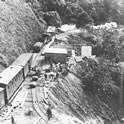 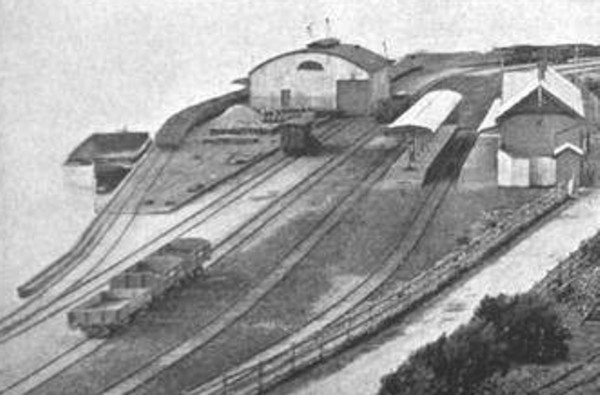 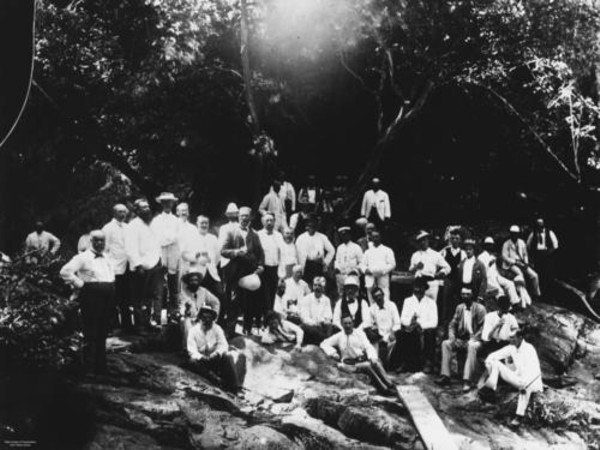 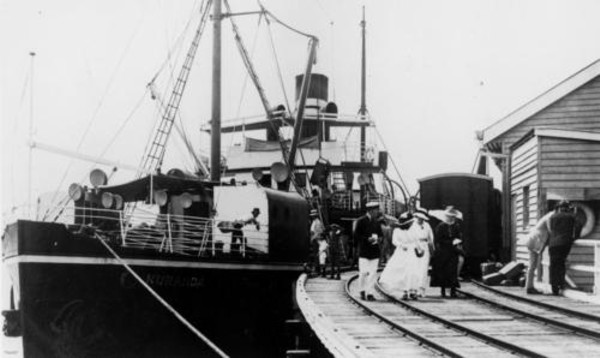
Construction Camp, - - - - Shenanigan's, - - - - Const'n Gang photo, - - MS Kuranda at wharf.
For the construction gangs, the rainforest conditions brought unbearable heat, mosquitoes, disease, and energy sapping humidity as well as
dense undergrowth to be cleared. The steep terrain meant difficult excavations and embankment filling to balance cut and fill operations was
a quantity surveyors nightmare. The numerous bridges cuttings and embankments bear testament to the ingenuity and skills of the men who
toiled in such difficult conditions.
The tenacity of the people who came to work on this railway is note worthy. Periodic damage from Cyclones,
landslide or poor construction materials, meant work had to be done several times over.
Not all the local timbers were well suited to initial bridge construction and deterioration set in almost immediately.
Such incidents saw repairs hastily undertaken from time to time. This is an ever-present situation, even today.
At various points along the line little camps sprang up, small tent shops and accommodation were temporarily set up for the duration of
the construction of that local section of the line that was presently under construction. Such hamlets came and went in a matter of months
as people packed up and moved up the line to the next area of activity. Still visible today all along the railway are the remnants of such
small villages and the foot tracks that linked them.
To ride Home, click on your ticket

|